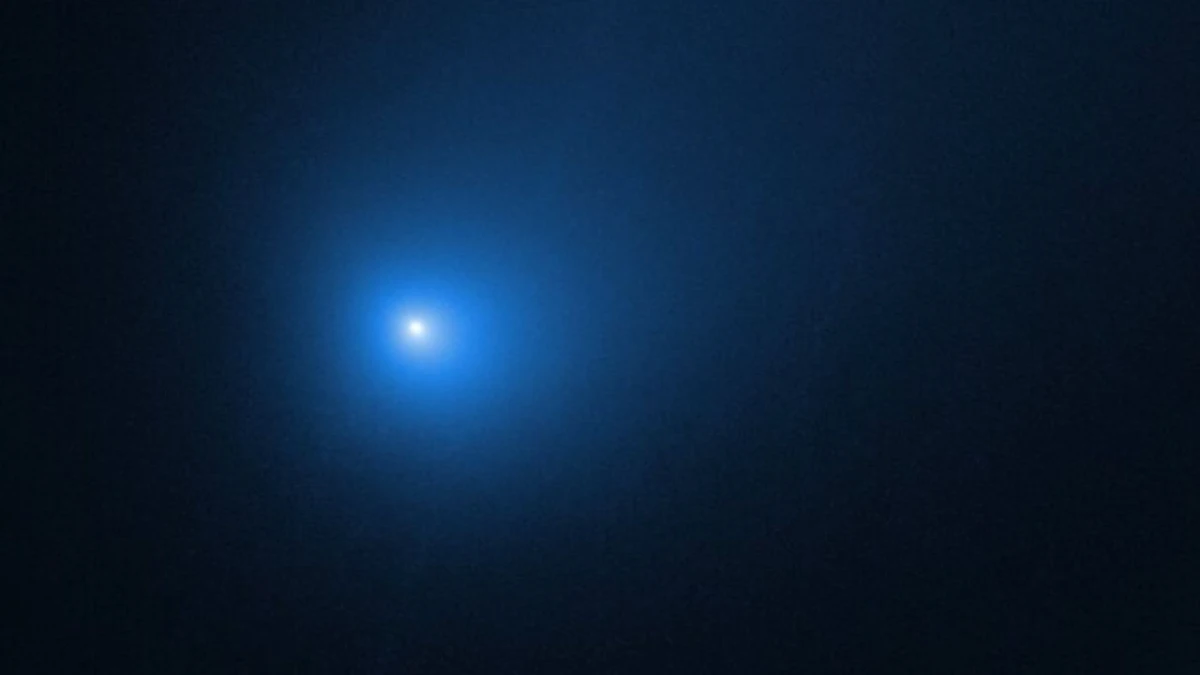| Summary |
|
An amateur astronomer has discovered a new interstellar comet, designated C/2025 V1. Found just ten days before its closest approach to Earth, the comet was spotted by Gennadiy Borisov at his observatory in Crimea. On November 11, it passed about 103 million kilometers from Earth, well beyond any danger zone, but near enough for scientists to determine that it probably originated from beyond our solar system.
The same amateur observer found the first confirmed interstellar comet in 2019, making this a rare repeat discovery for a non-professional astronomer.
Borisov works from a small observatory near Nauchnyj using a 0.65-meter telescope. On November 2, he recorded a faint object moving across the star field. He reported it to the Minor Planet Center, which collects and verifies such detections. Within hours, observatories in other countries confirmed the sighting. Independent confirmation is required before a new comet receives a formal designation, and C/2025 V1 cleared that step quickly.
Tracking data shows the comet follows a hyperbolic orbit with an eccentricity of about 1.01. Objects that travel on these paths are not trapped by the Sun’s gravity. They enter the solar system, swing around the sun once, and leave for good.
That path makes astronomers confident this object came from interstellar space. Its calculated speed far from the Sun is about 2 kilometers per second. That is slower than the 26 kilometers per second measured for the object known as ‘Oumuamua in 2017, but still fast enough that it is not bound to the Sun.
This is Borisov’s second interstellar discovery. His earlier find, 2I/Borisov, flew through the solar system in 2019 with a clear tail and unusual chemical traces, including large amounts of carbon monoxide. C/2025 V1 appears fainter. Observers measure it at around magnitude 14.6, with only a small glow and no long visible tail. The comet will reach perihelion, its closest point to the Sun, on November 16 at about 0.46 astronomical units.
For anyone hoping to view it, astronomers say the comet sits in the constellation Virgo before sunrise. From London, it rises around 4:30 a.m. and climbs to more than 40 degrees above the horizon. A small telescope or sensitive camera can detect it, though city lights make viewing harder. Sky-mapping apps can help locate it near the star Spica.
Interstellar objects are uncommon. Only a small number have ever been confirmed. Because they formed around other stars, they may contain ices and dust that differ from comets native to this solar system.
Large telescopes, including Hubble and the Vera Rubin Observatory, will study the new object as long as it remains bright enough. Researchers hope the data will improve models for how comets form around other stars and how often these visitors reach our neighborhood.
For now, the comet is moving back toward deep space. It will fade over the next few weeks as it travels away from the Sun. Even so, the discovery gives astronomers another chance to study material that did not originate here, and it places Borisov in a rare group of observers who have found more than one interstellar traveler.

